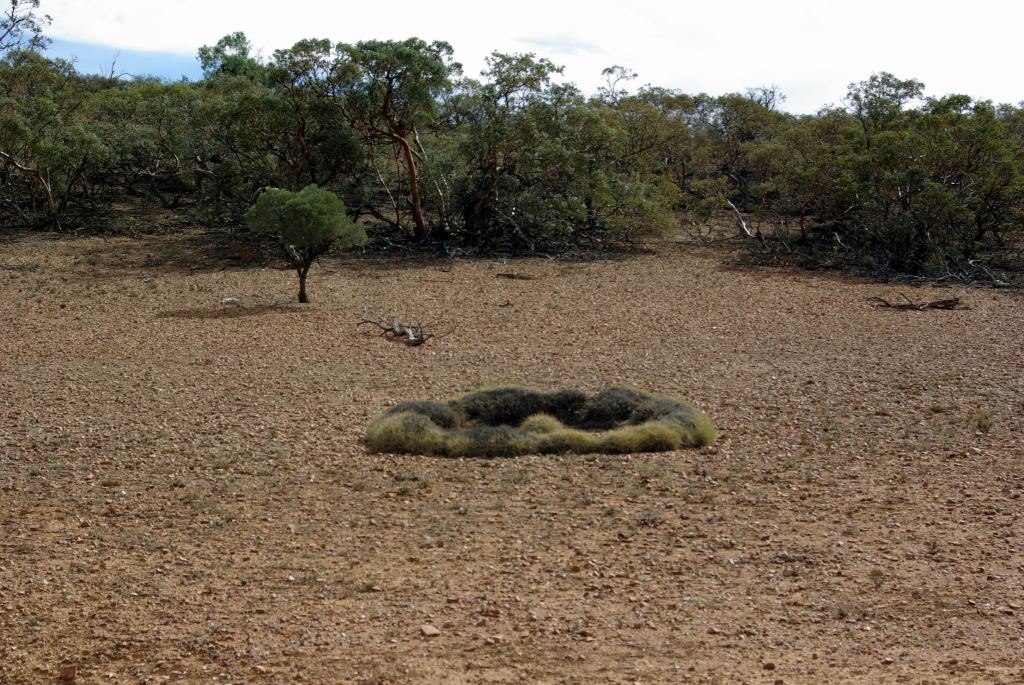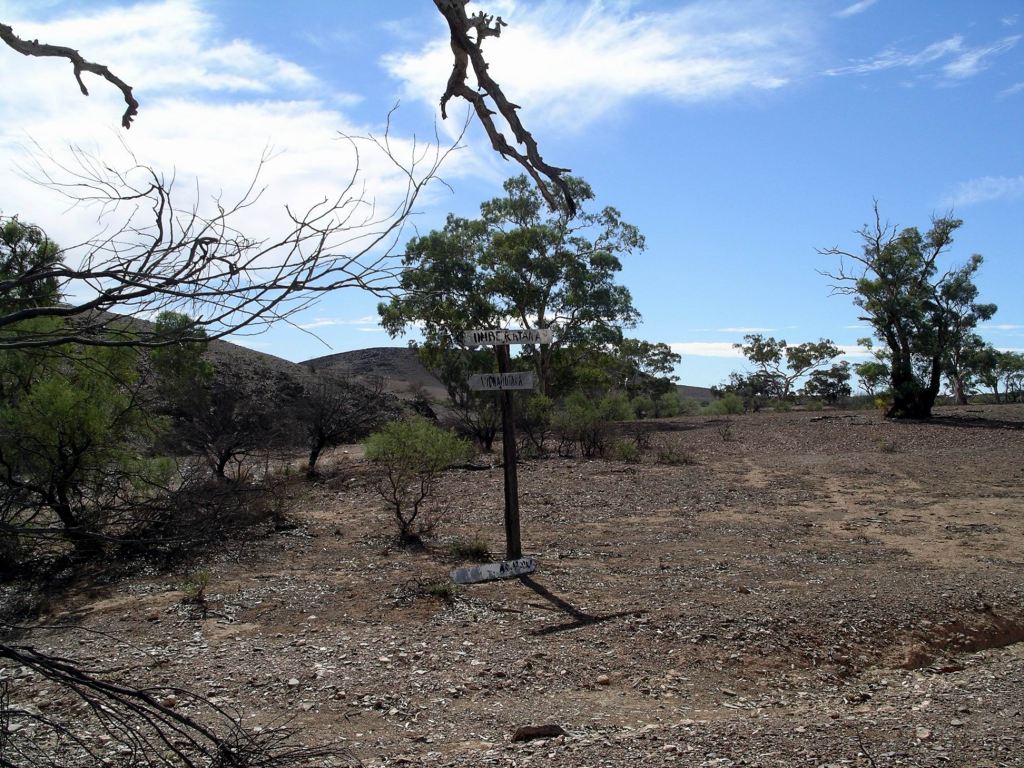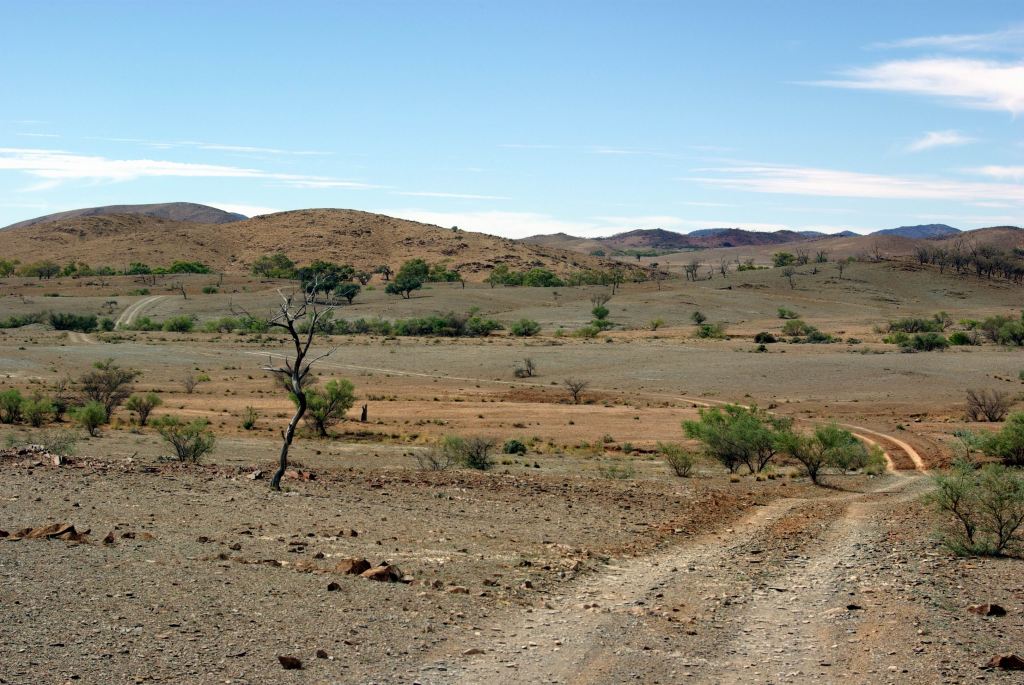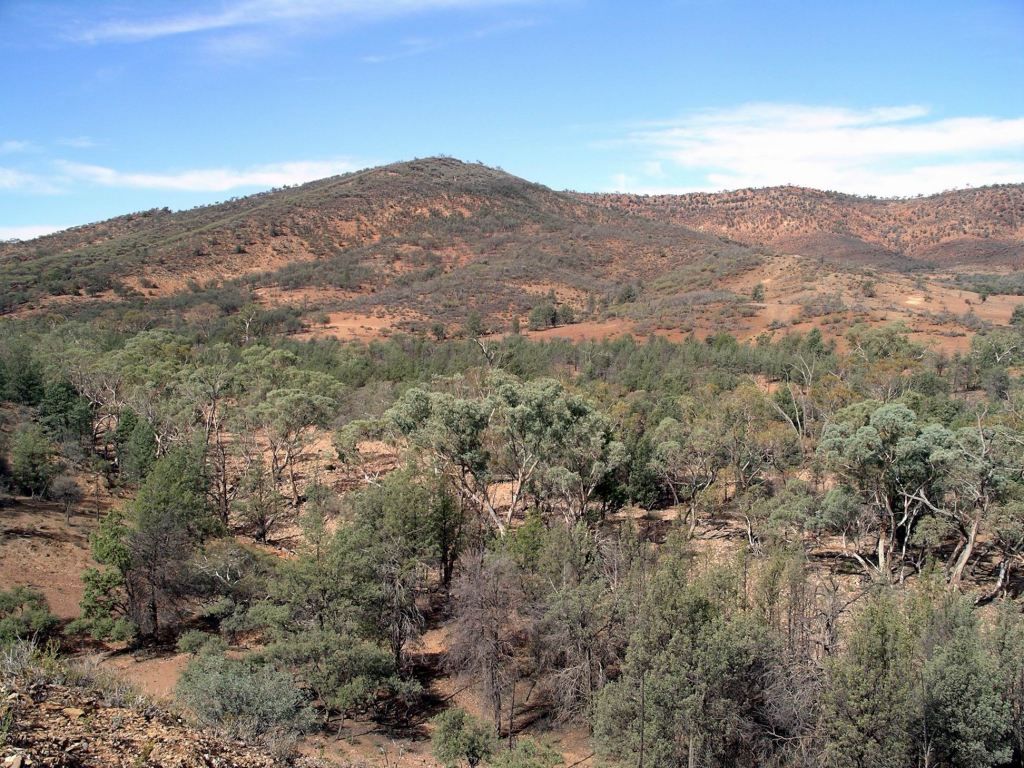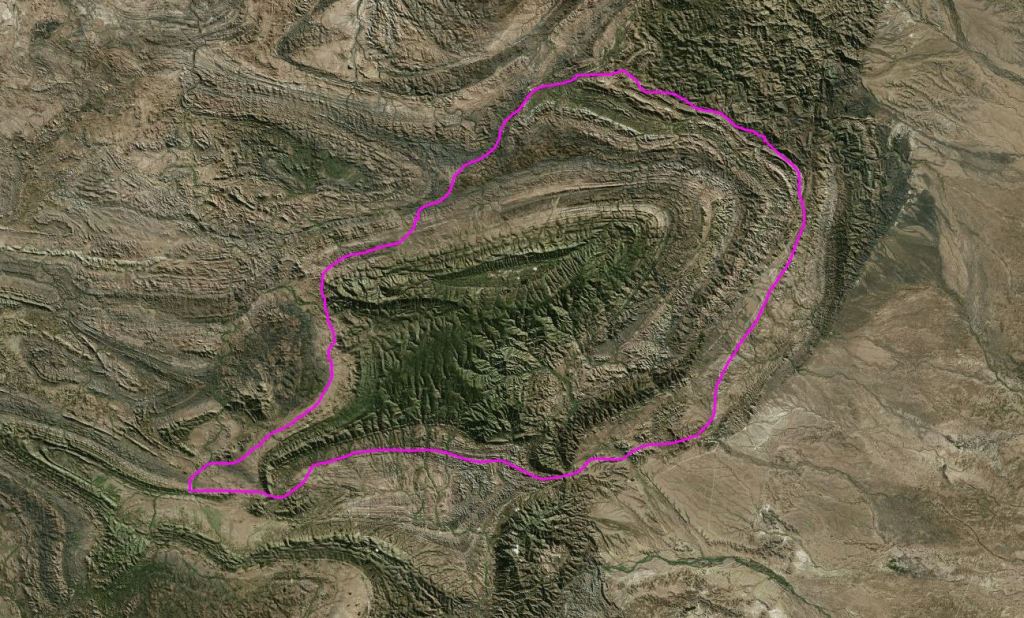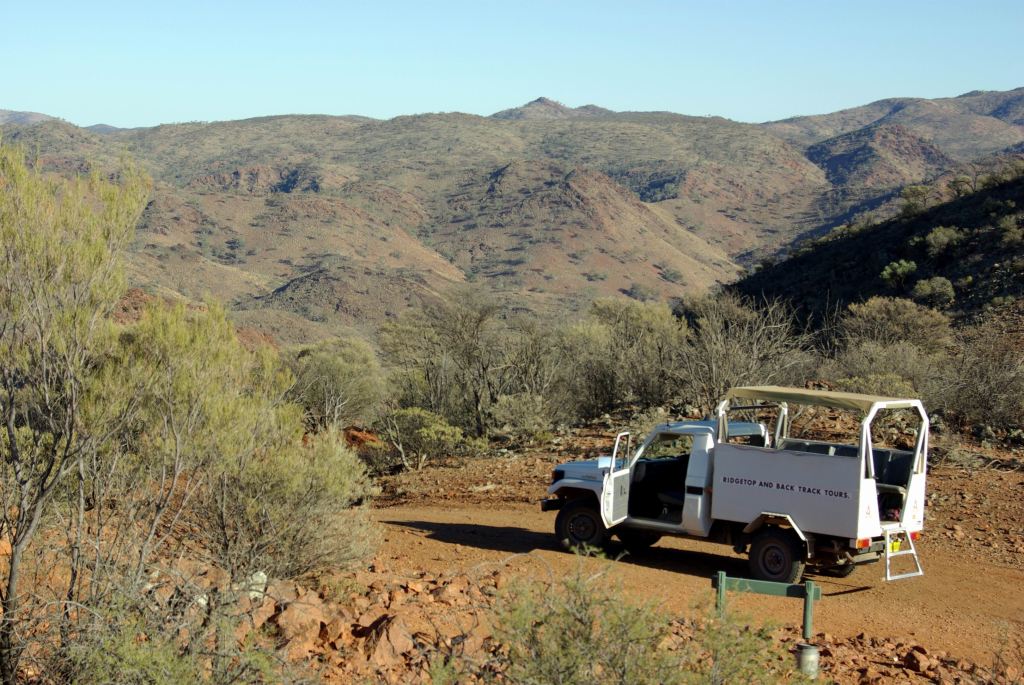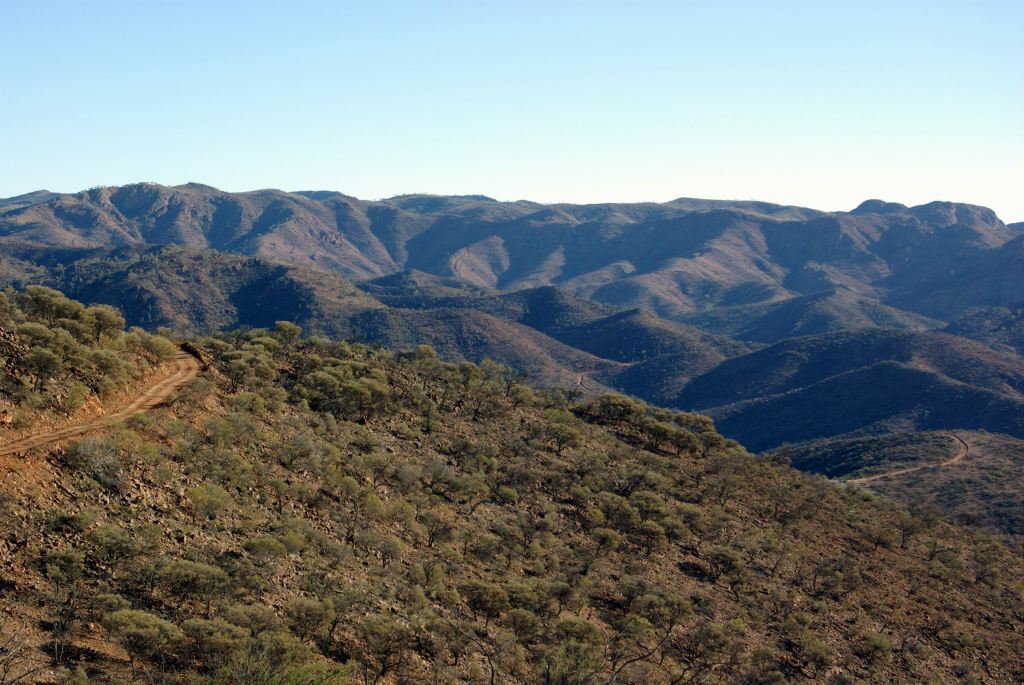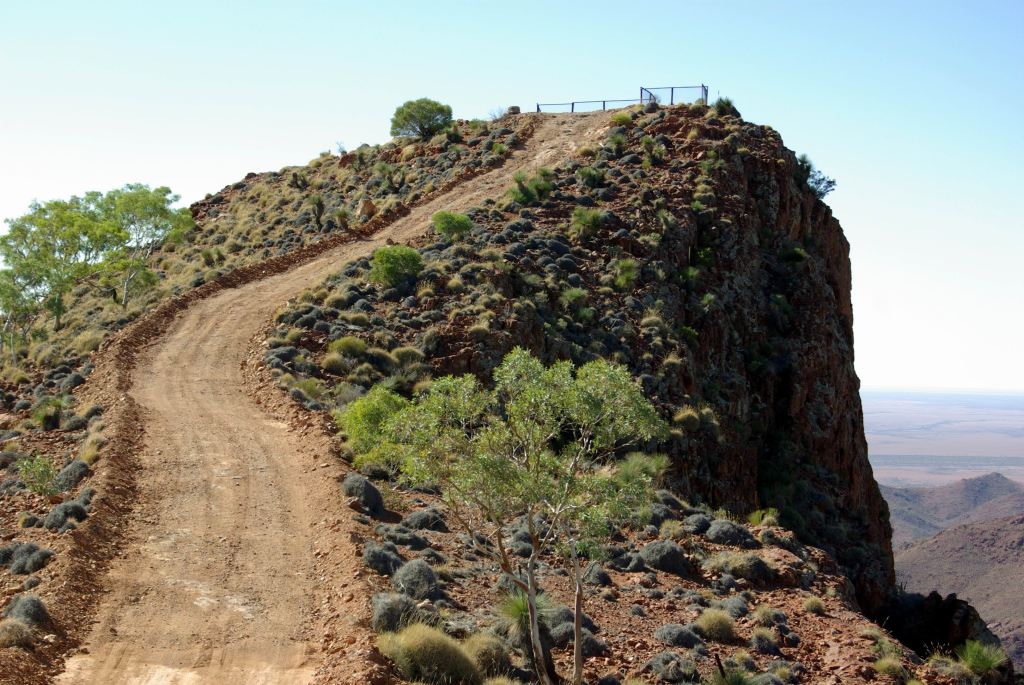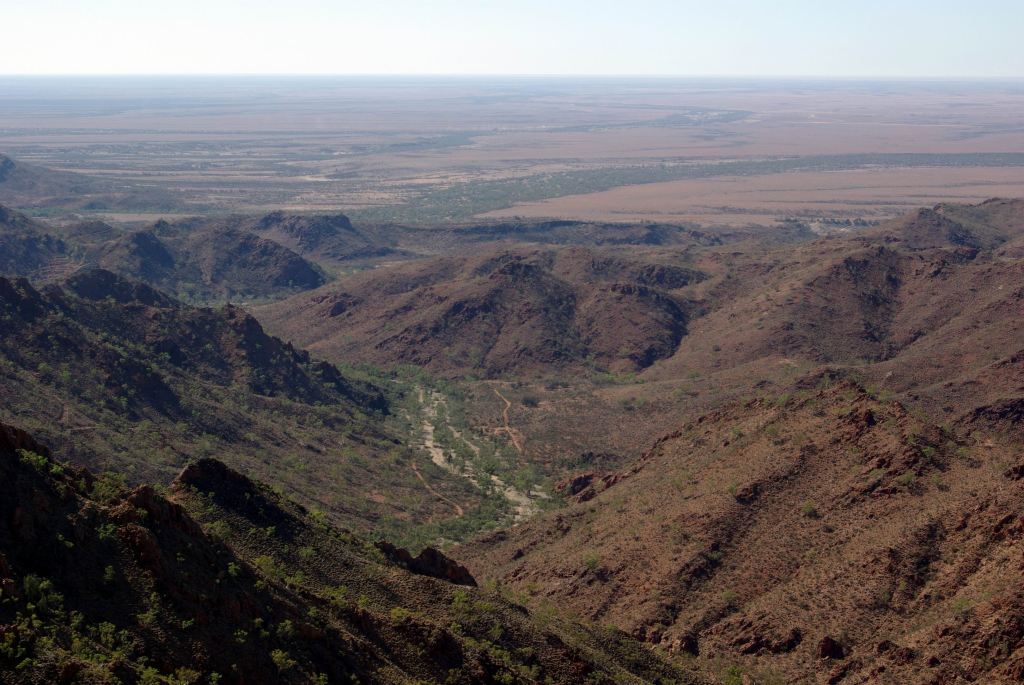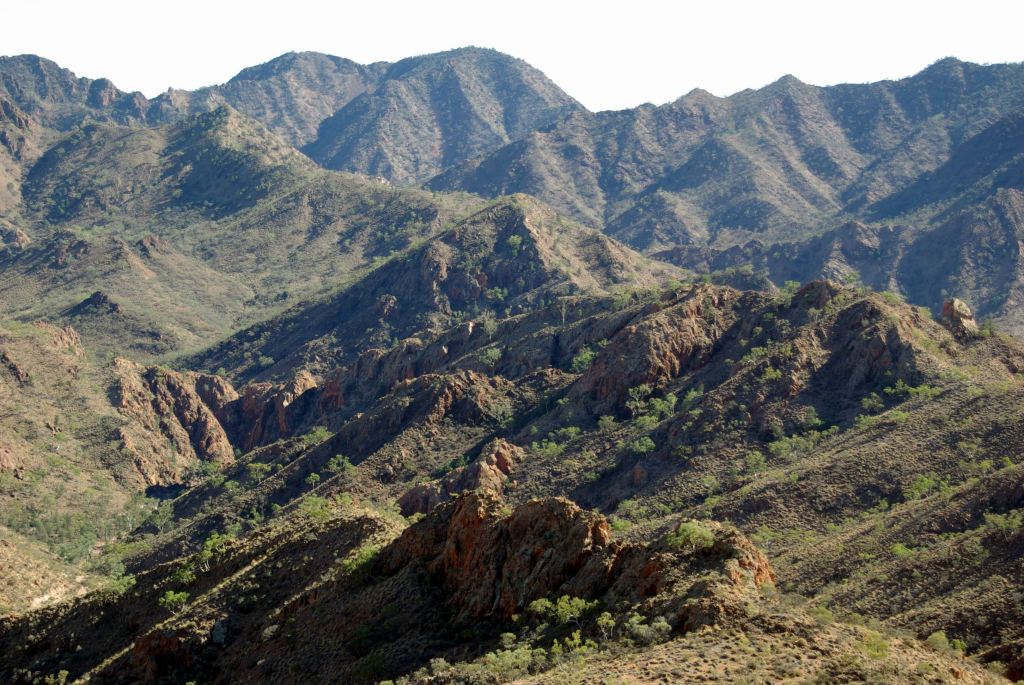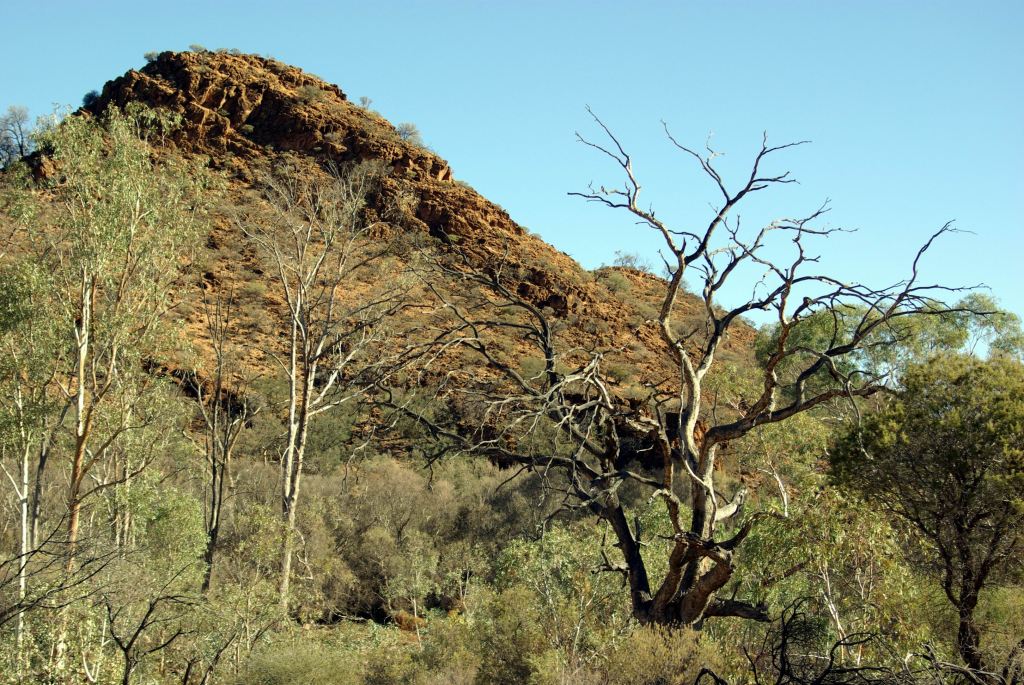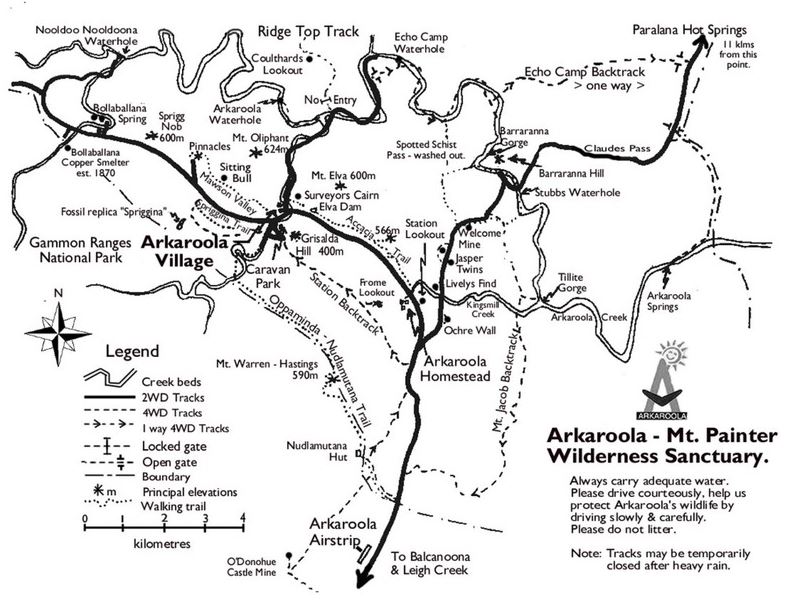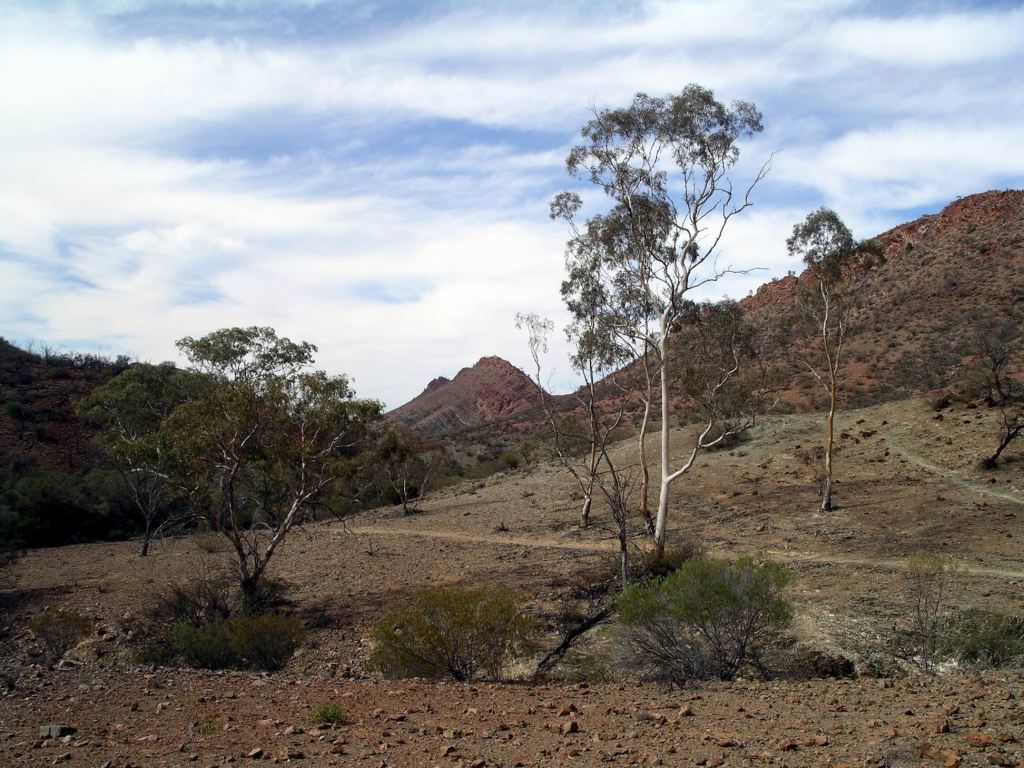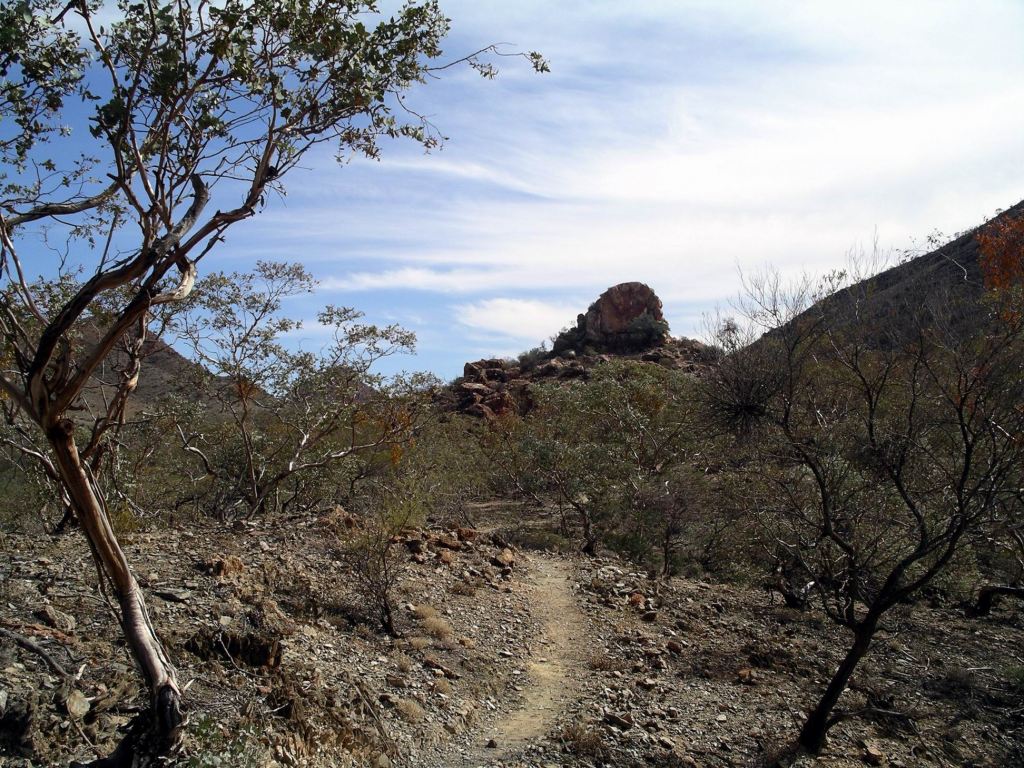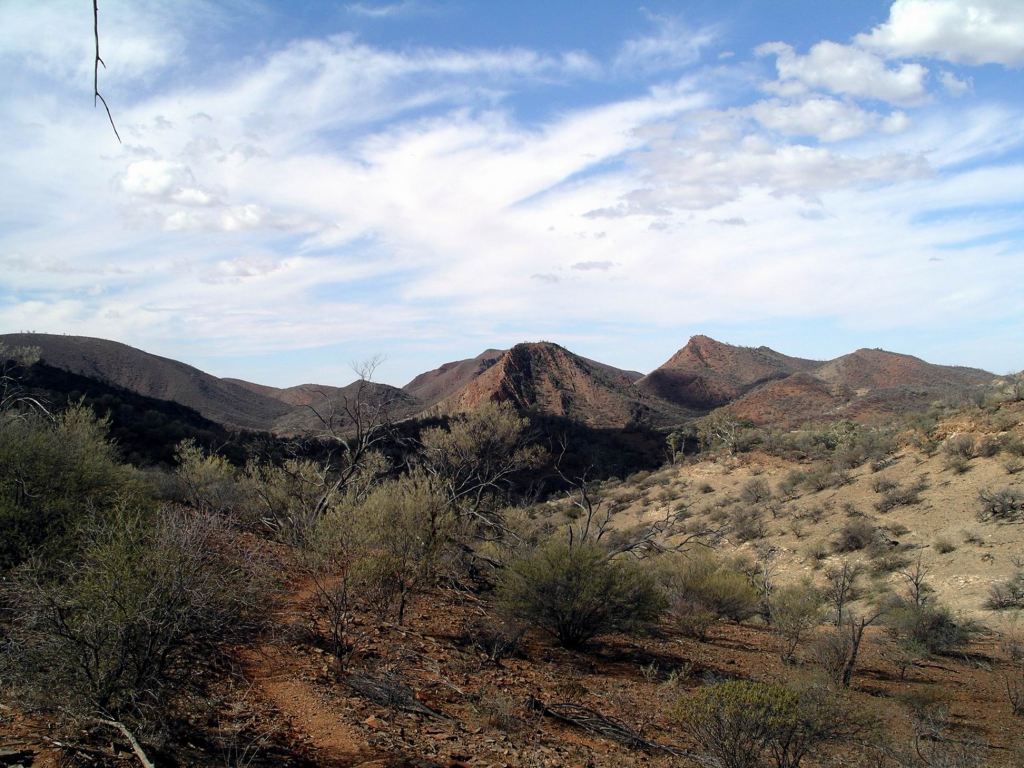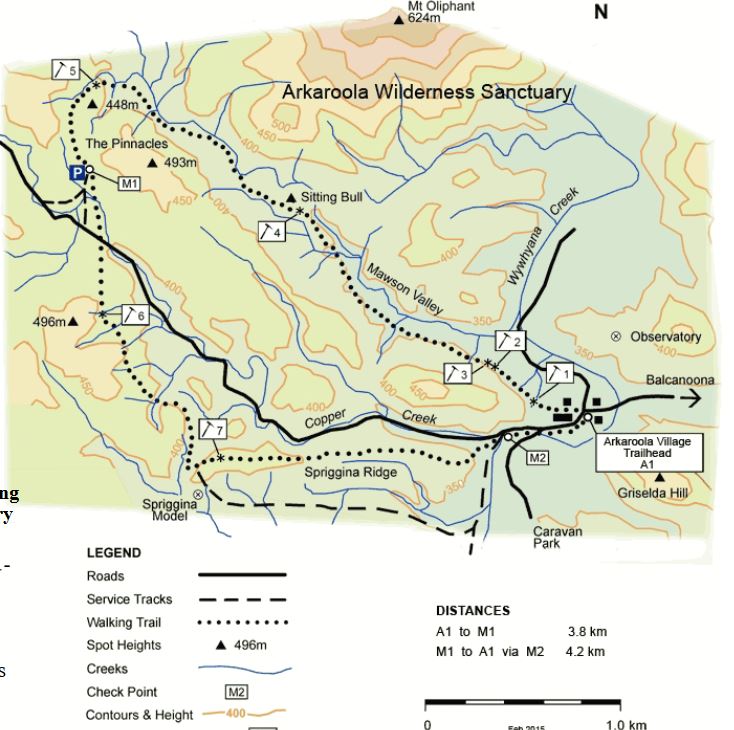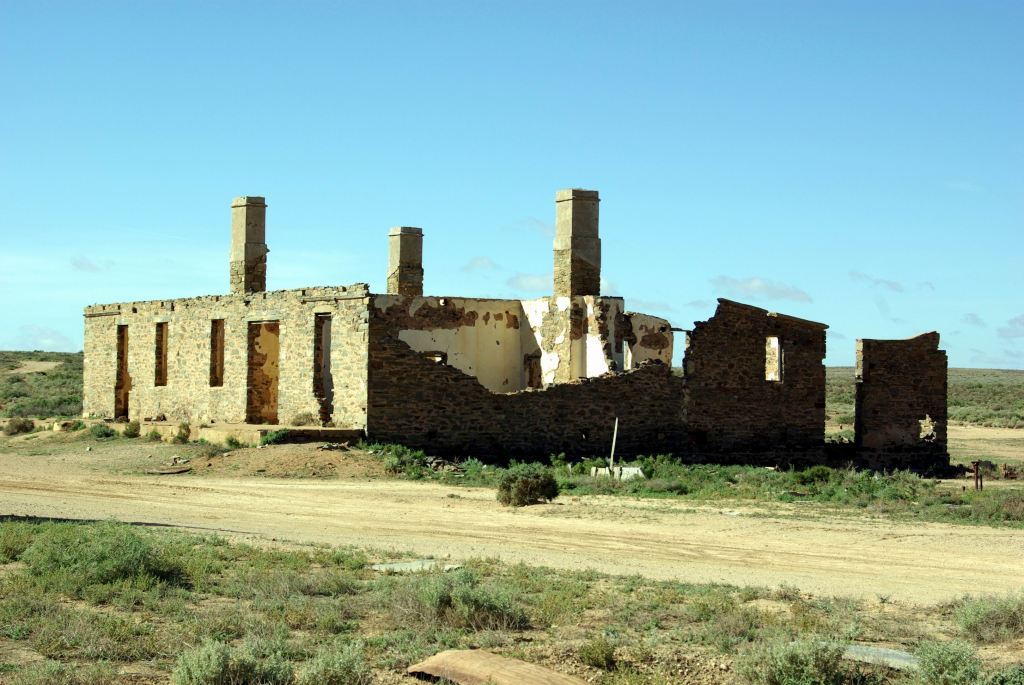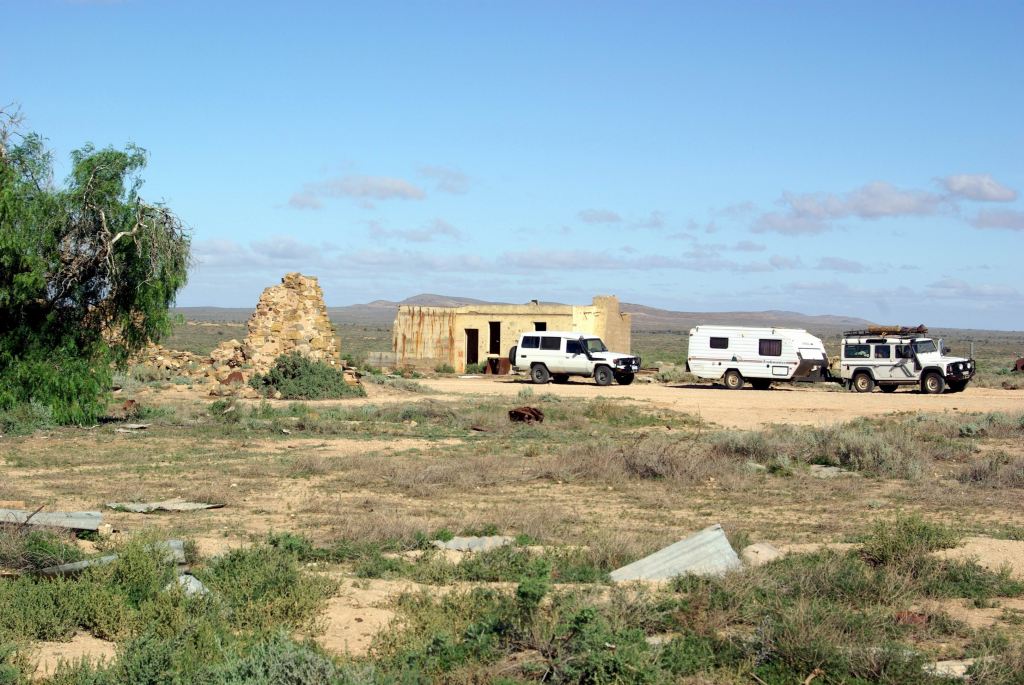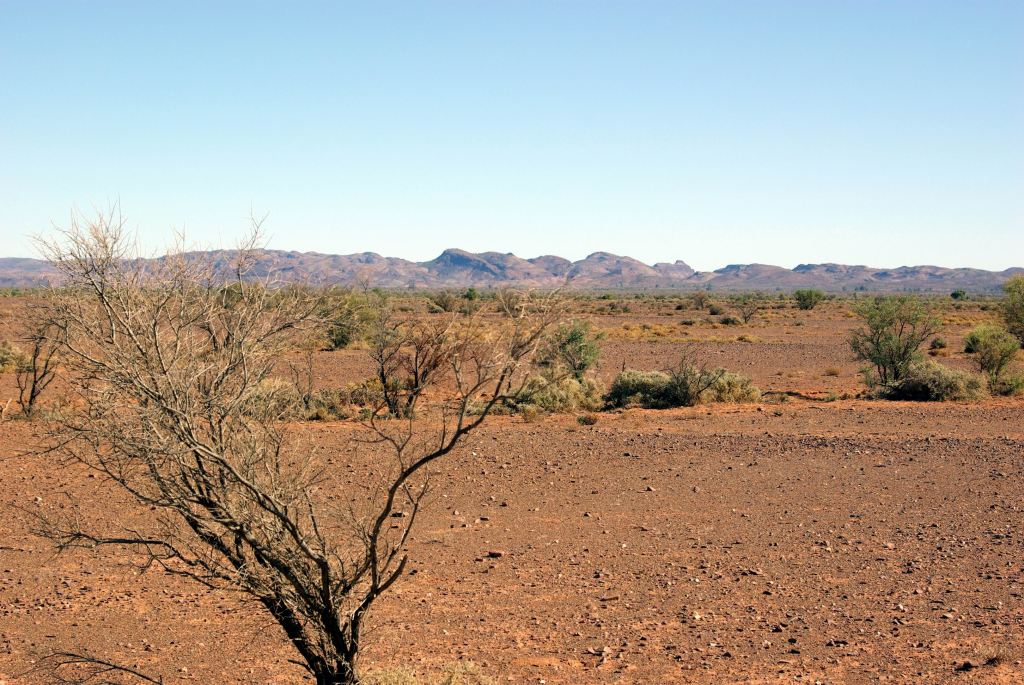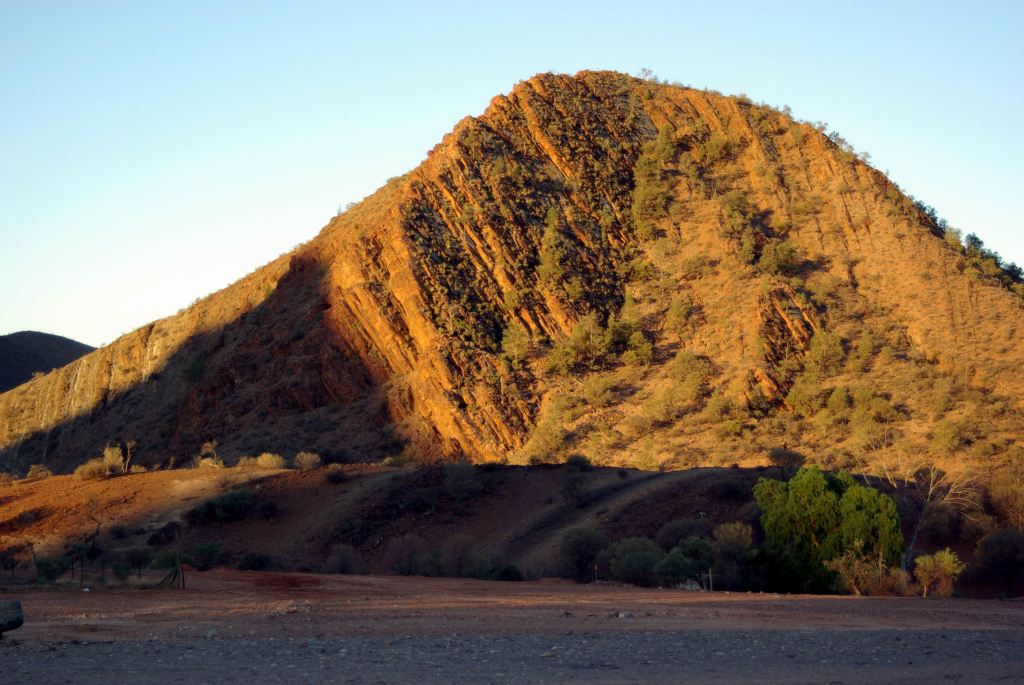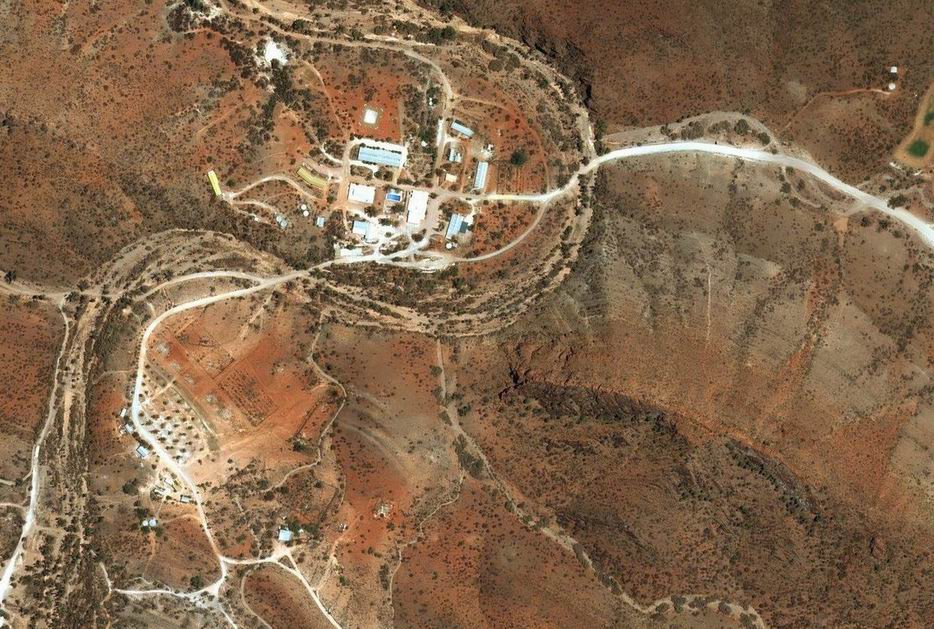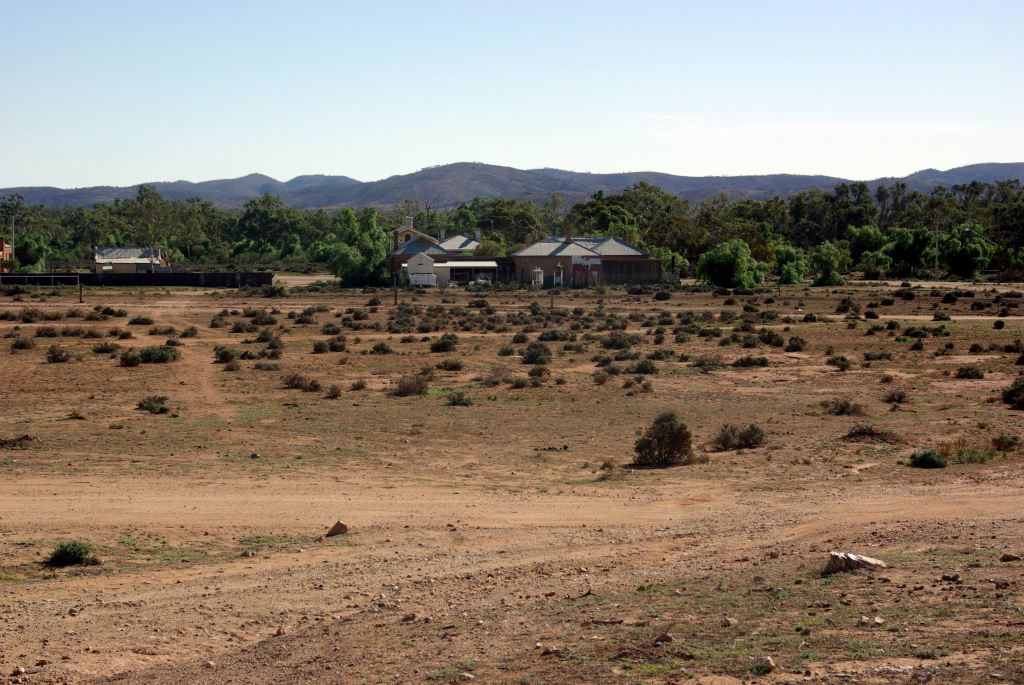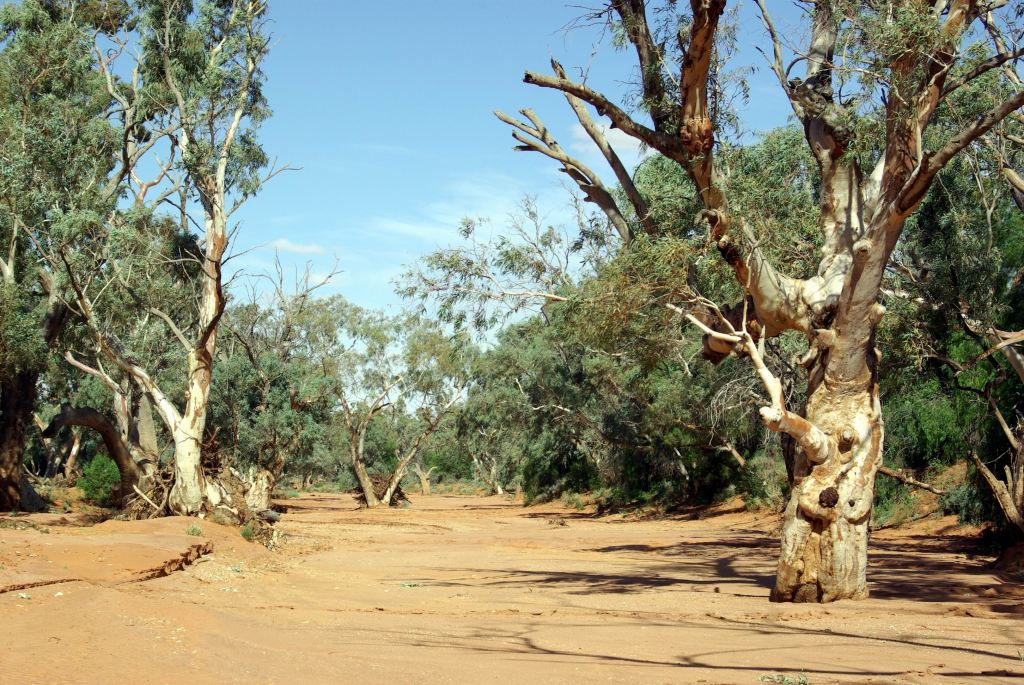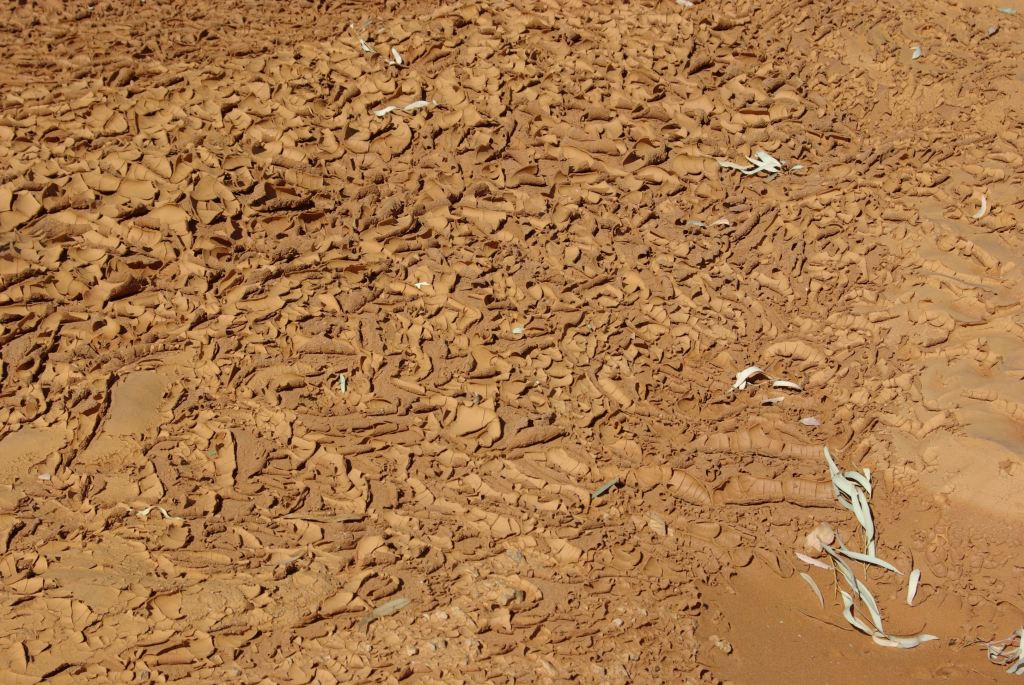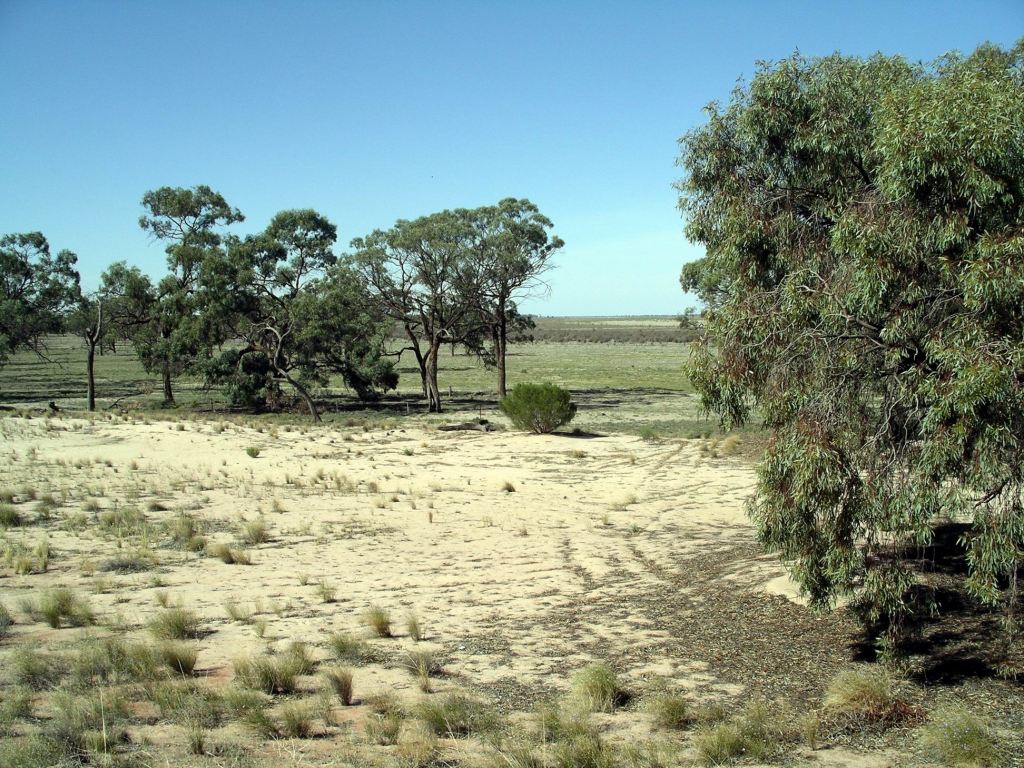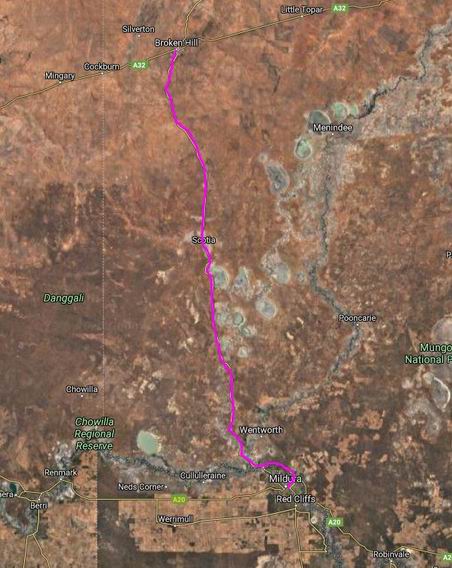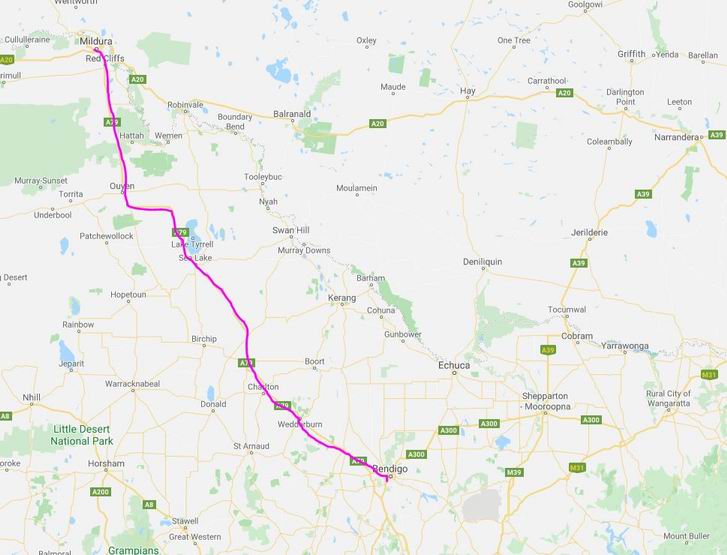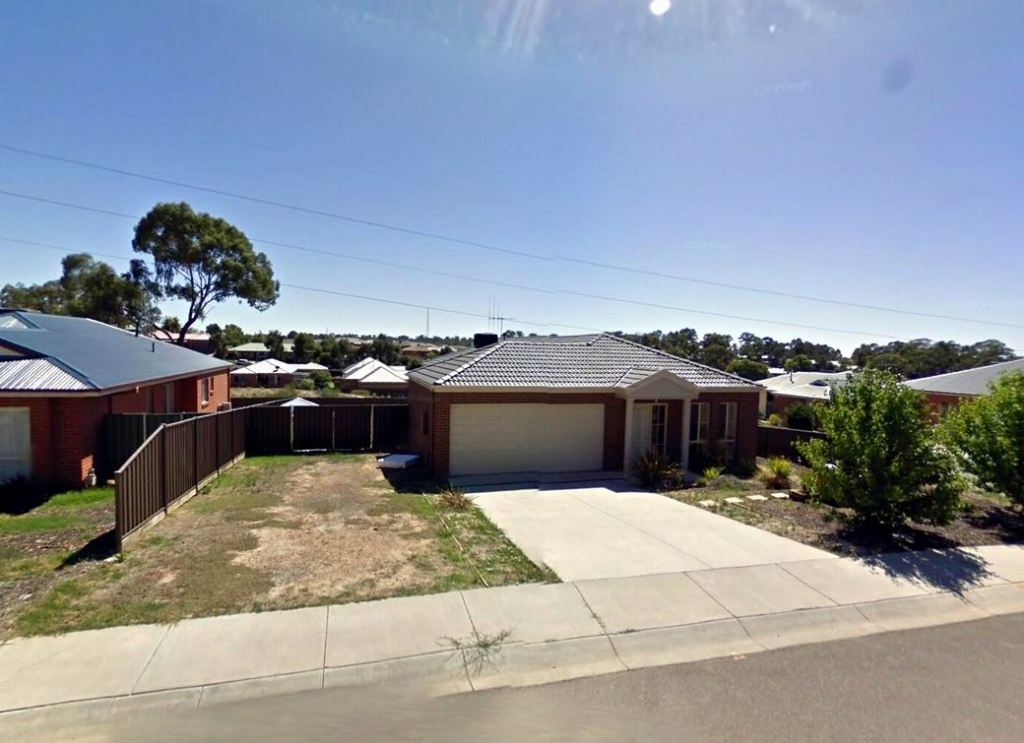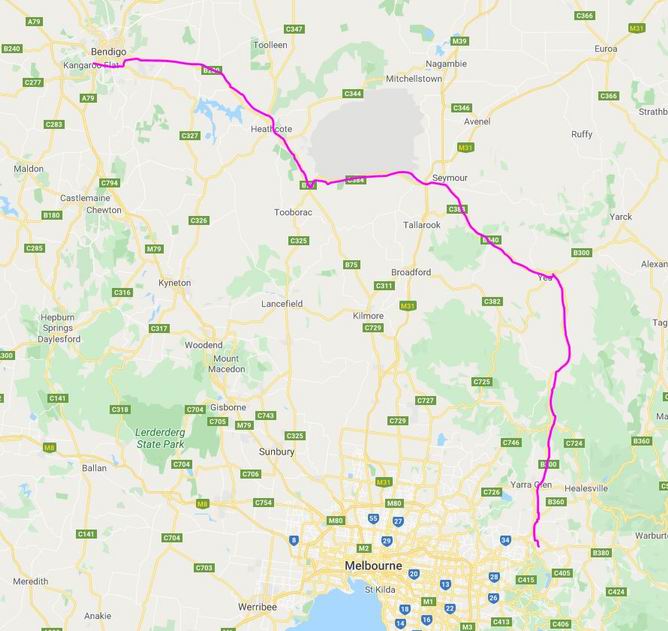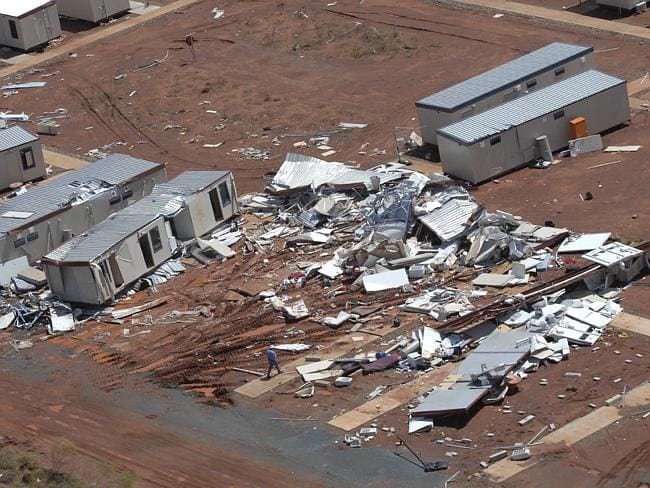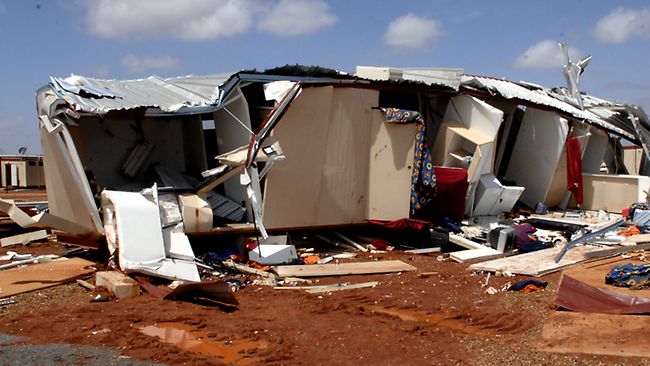TUESDAY 8 MAY ARKAROOLA
Today was more overcast. I hoped that was not ominous.
We got up slightly later than usual, perhaps due to lower light levels, and didn’t get away from camp until 10-ish. Later than ideal on a day of planned walking.
We drove back south to the National Park, and took McTaggarts Track in as far as Grindells Hut.
This relic from the earlier pastoral period stands in a natural pound, surrounded by bare ranges and with a fabulous outlook. It actually has a rather grisly history, at odds with the beauty of its setting, involving the murder in the area of a local pastoralist, possibly at the hands of his father in law – Grindell.
Left Truck at Grindells Hut and set out to do a circuit walk – along Balcanoona Creek to the junction with Worturpa Creek (where we reached from the other direction the other afternoon). Then would follow that creek up past Weetootla Springs, to McTaggarts Track. This would be easy, but scenic walking, along some of the road we had driven in on, and take us back to the Hut and Truck.
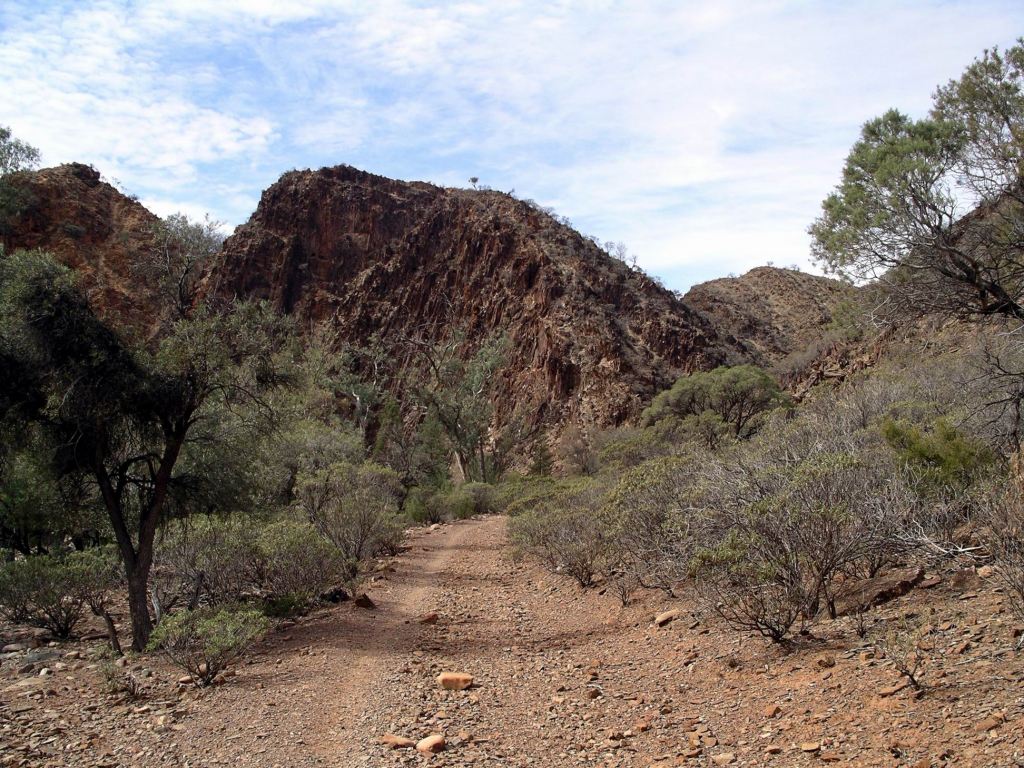
Yet again, the practice didn’t quite follow the theory!

The walk from the hut, along Balcanoona Creek, was really pretty, as was the way up Worturpa Creek to the Weetootla Springs. When it is so arid, such occurrences of water in the landscape are extra attractive.
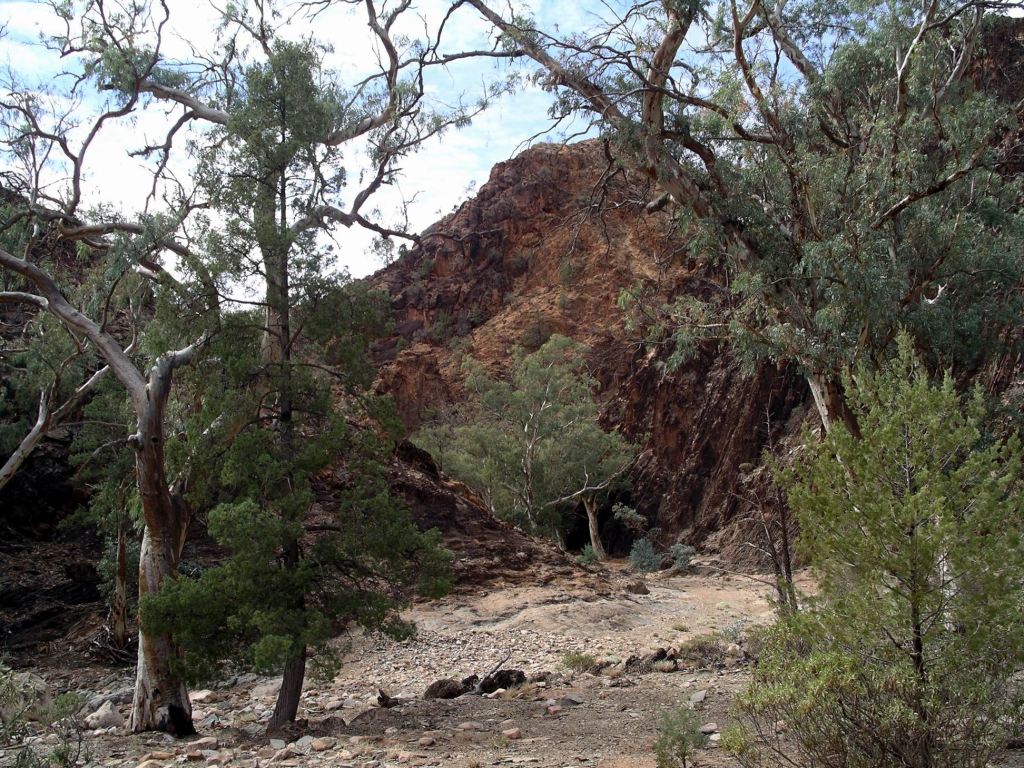
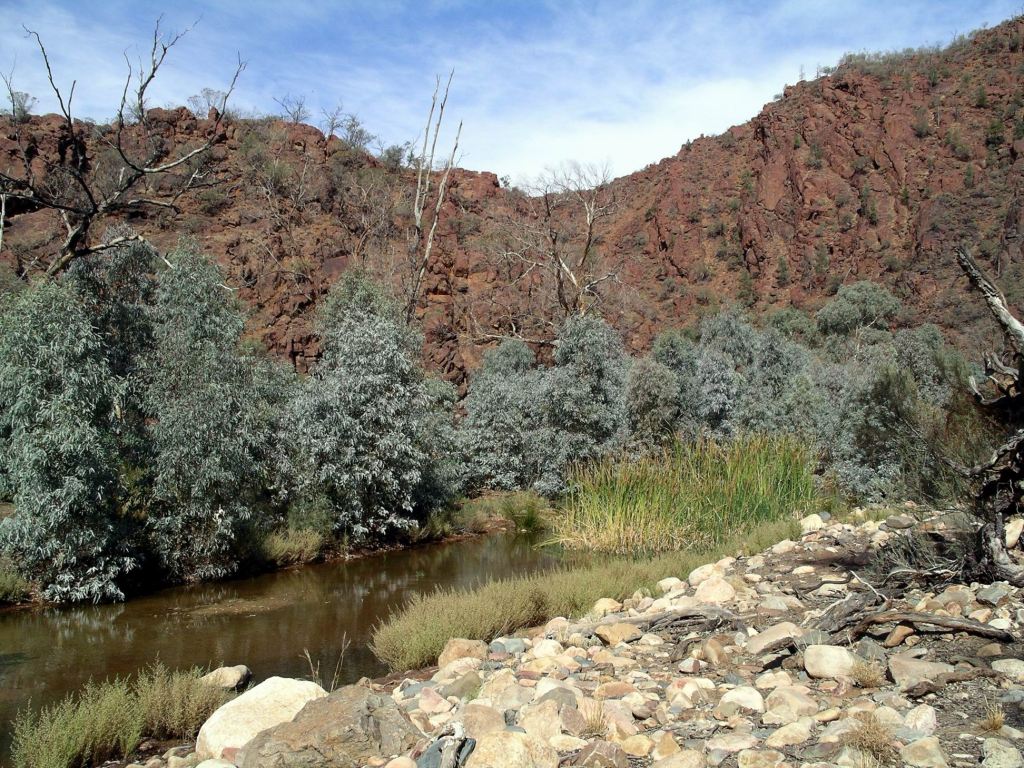
The Springs were like a set of rock gardens, with water features. Not for the first time in such a setting I had the thought that I’d love to be able to replicate them in the back yard! There was a lovely selection of plants growing around the little pools.
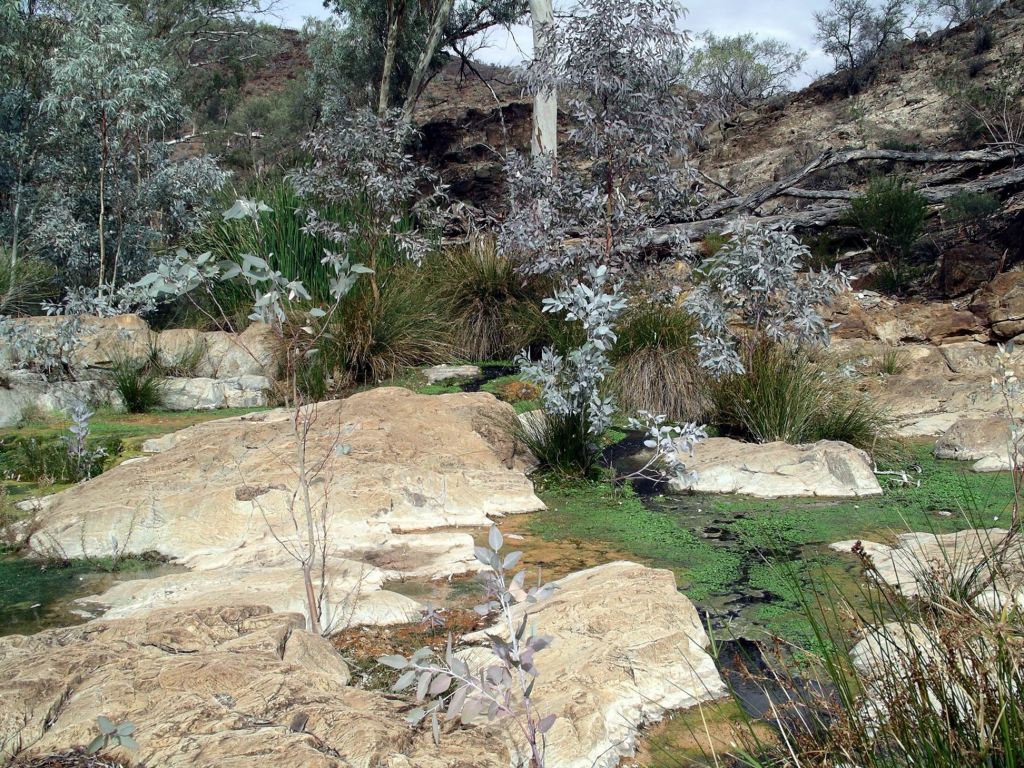
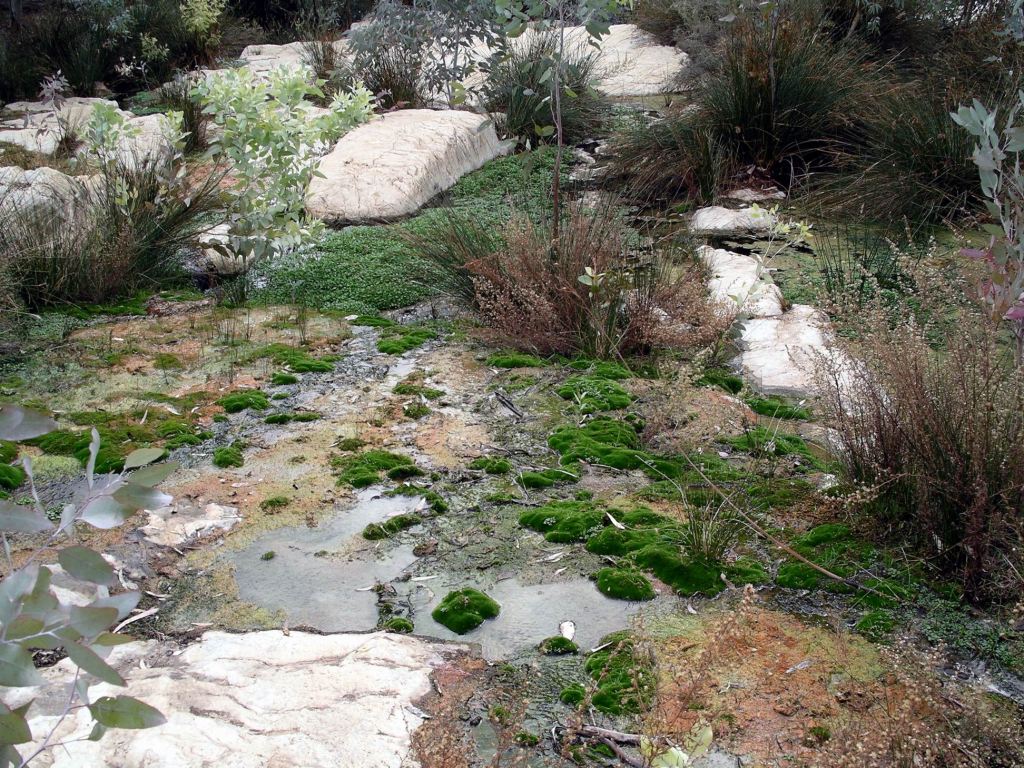
We browsed about the Springs for a half hour or so before it was time to move on, with the bulk of the walk still ahead of us.
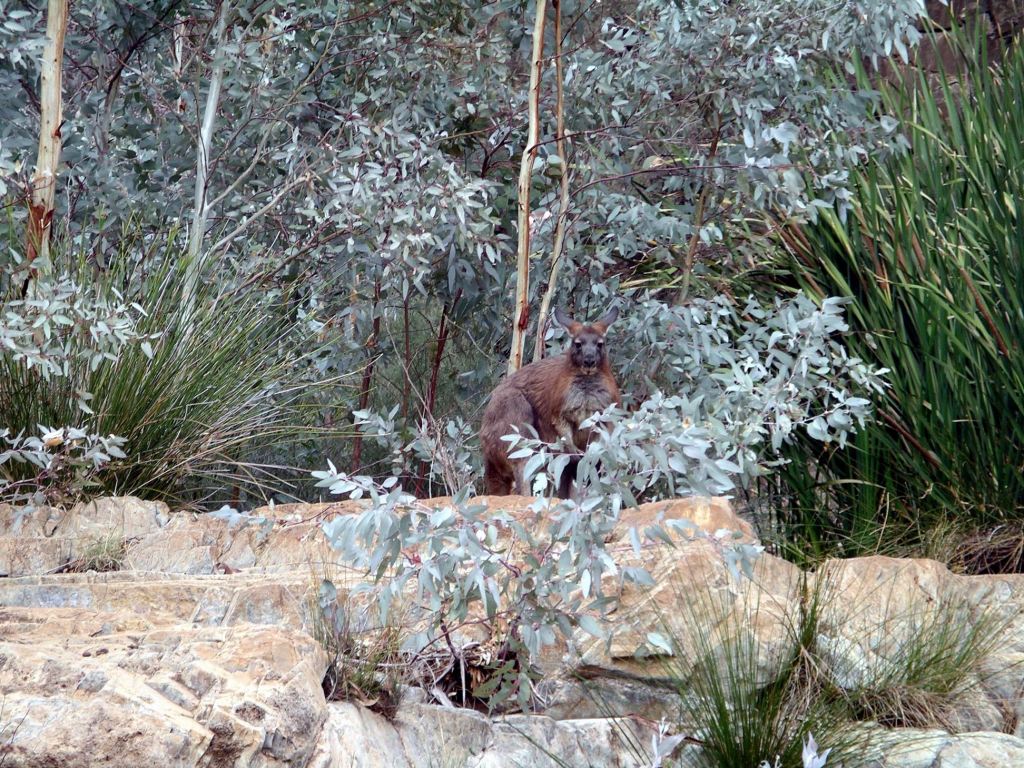
The very fit M was in the lead, and in possession of the map, and we followed her as she crossed the creek and set off.
After the Springs, the track soon went on to open, steep hillsides, and could be seen sidling across the steep slopes ahead, for quite a way. I’d thought, from my memory of the track map, that we would be following a shaded creek valley, not playing mountain goats on this sort of going. But the leader – and the map – was very quickly too far ahead to argue with!

Eventually M stopped to let the two of us catch up, and have a rest, and a consult. We realized that we had, in fact, taken the wrong track back at the Springs and were now well and truly along the Monarch Mine Track. At least, we knew where we were, even if it wasn’t where we had intended to be! There was not much choice now but to push on.
I do not like these tracks that are long climbs up ridges, on narrow trails, with big drops below. Don’t do uphill well and heights make me dizzy. So this section of the track was not very pleasant for me. In such terrain, one can’t take their eyes off the track to look around at the country – I am often prepared to take the risk of tripping over a rock, to gaze about, but not when the landing is likely to be a very long way down.
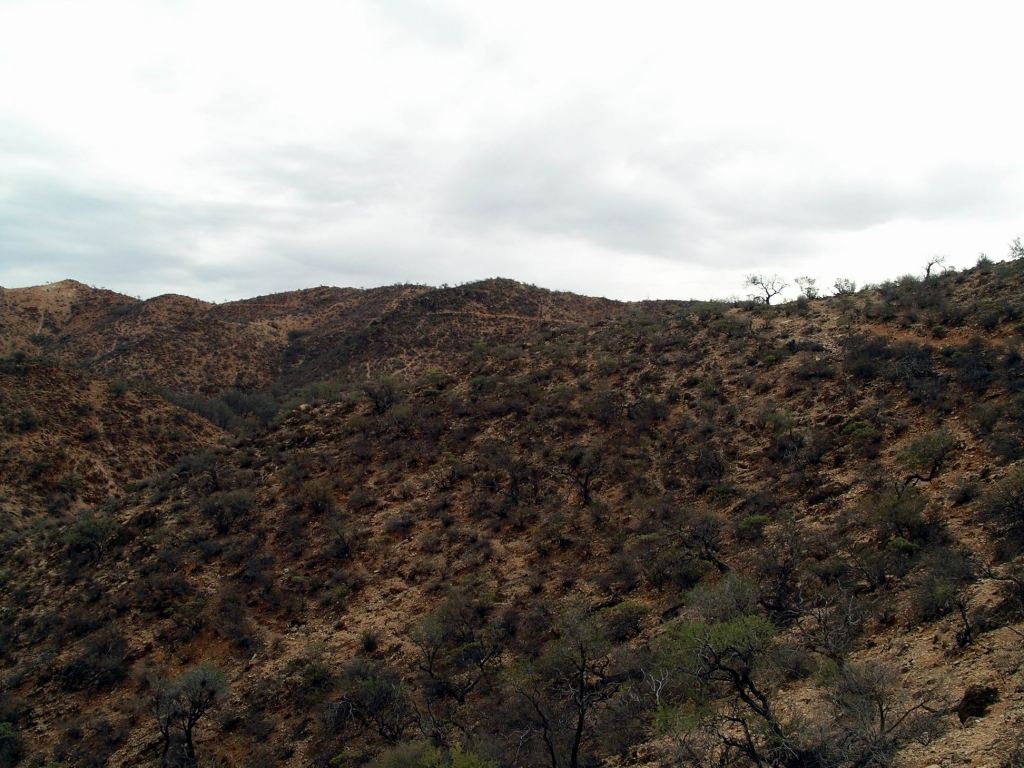
Eventually we reached the top of the ridges where we could look across to and down on the rugged and dramatic ranges that surrounded the central pound.

Found the mine remnants. This had been a copper mine – a very small operation that only went for a couple of years. The little ore they did find must have been taken out by horse, or donkey. There had never been a roadway up here!
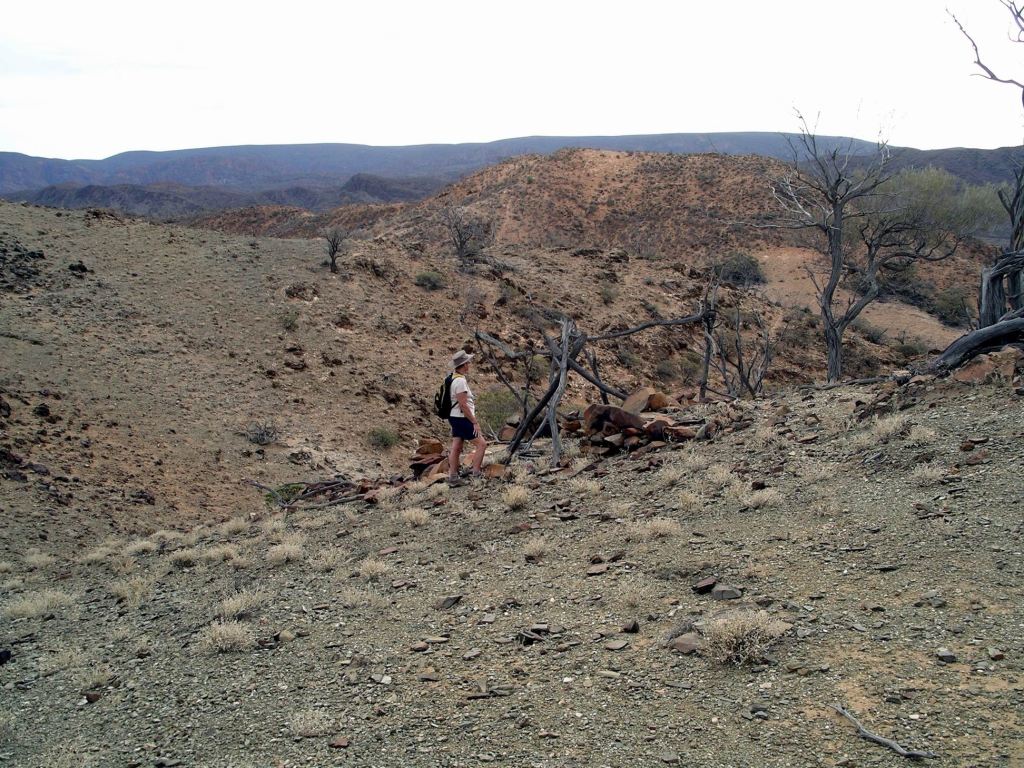
The mine was yet another indicator of how far men were prepared to go and the hardships they would endure, to chase precious metals. It struck me that we’d experienced two ends of a spectrum, this year: the vast open cut iron ore mines of the Pilbara, compared to this little mine, probably operated by only one or two men. The contrast could not have been greater.
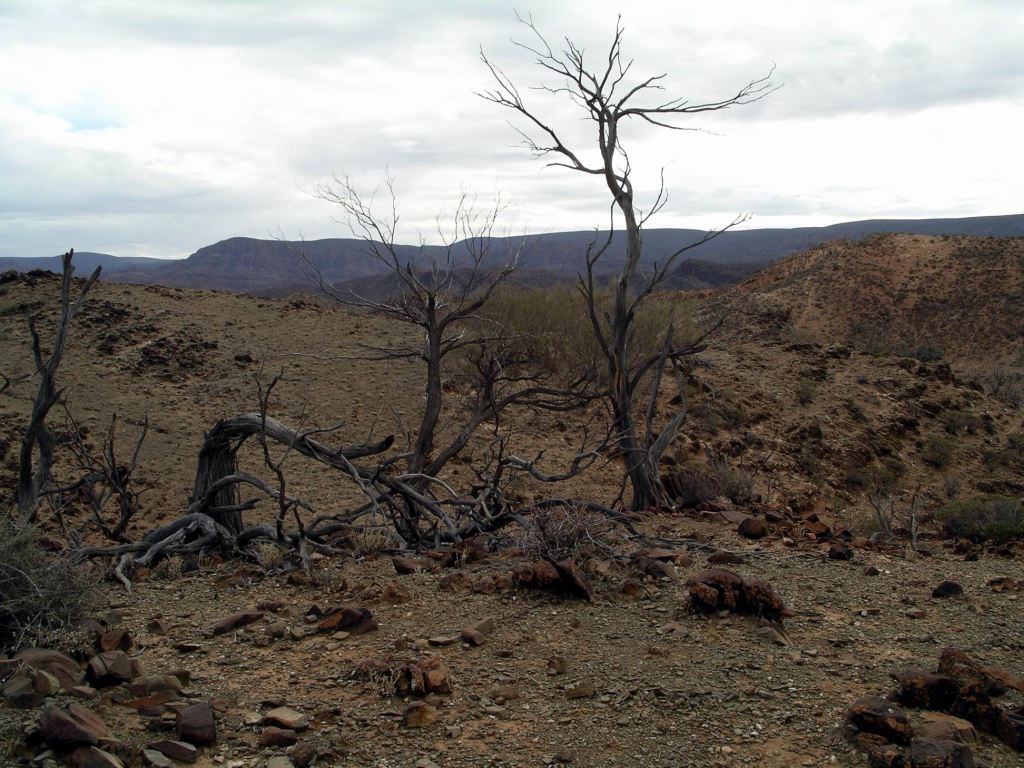
Ate our packed lunches up here.
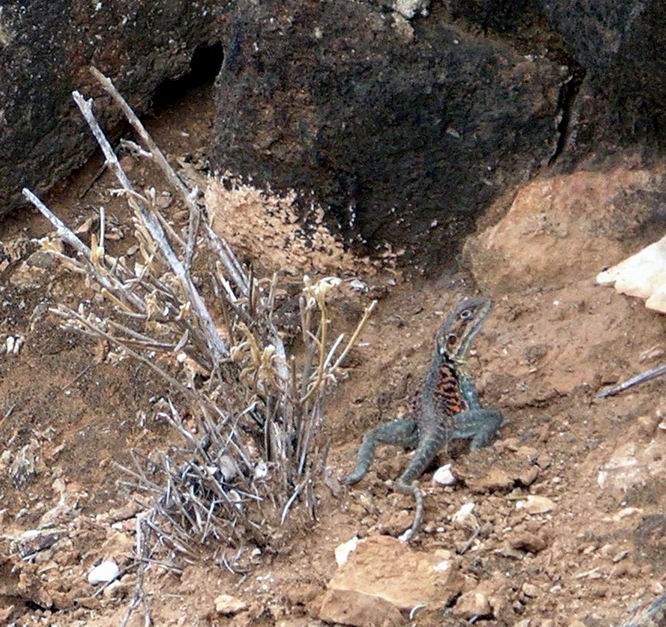
From the Mine, the track descended on more gentle terrain back to Grindells Hut. Downhill, I like!

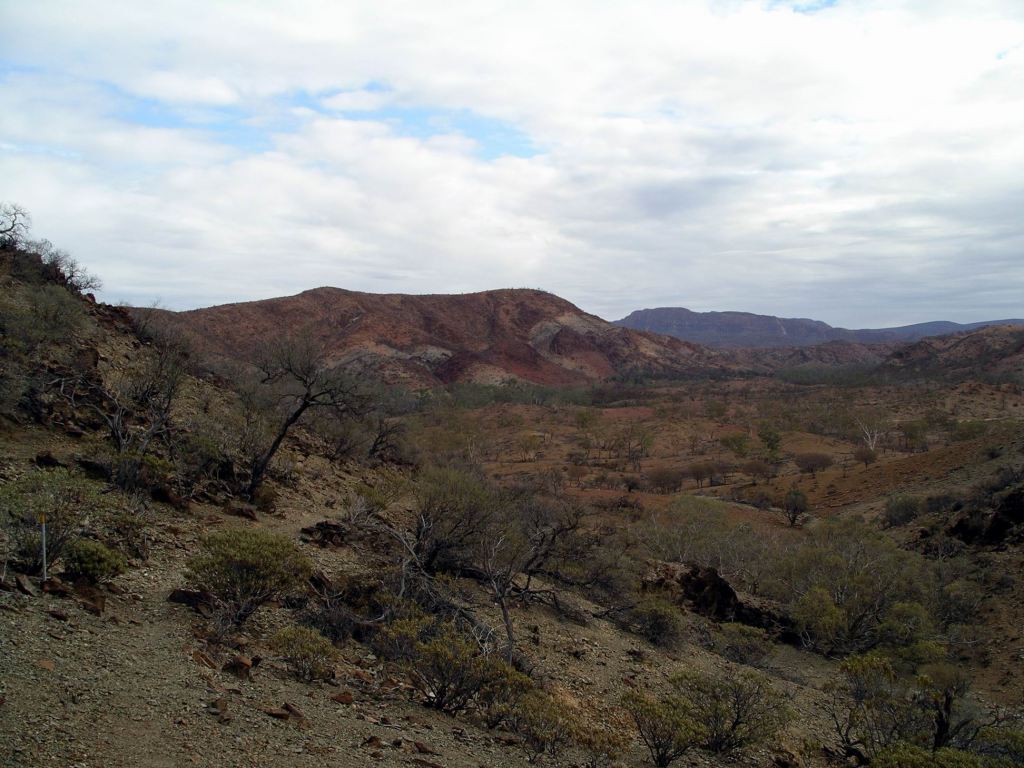
We must have walked about 11kms. John was very pleased with how he went on the tough terrain. My Achilles was not happy – I hoped I’d not fired it right up again. I reckoned our walking muscles were getting into shape – fast!

Then, since we were here and there was still some of the afternoon left, we drove the “inner circuit” – along the one way Worturpa Loop Track to Gammon Yards and via the loop track back to the Lochness Well camp area. The scenery was interesting and there were some pleasant stands of cypress pine trees.
That entire loop is one way only – which should in itself be a give-away that it would be no picnic! It had some “interesting” 4WD sections. I definitely do not like places where you climb a steep hill towards what is obviously a vertical drop at the top – with no indication whether the track, at the top, turns right, left, or goes straight on! Until you are right on it! The long, block like nose of Truck did not help either. M was following us, in her Troopy, and did fine with the driving – but having us in front was a bit of a guide. To date, her 4WD experience had been on much more flat country, like Arnhem Land, not on roller coaster tracks. I reckoned we would fix that while we were here!
The Lochness camp area was by Balcanoona Creek, with some vegetation – mostly cypress pines – around it. No facilities, but a pleasant spot.
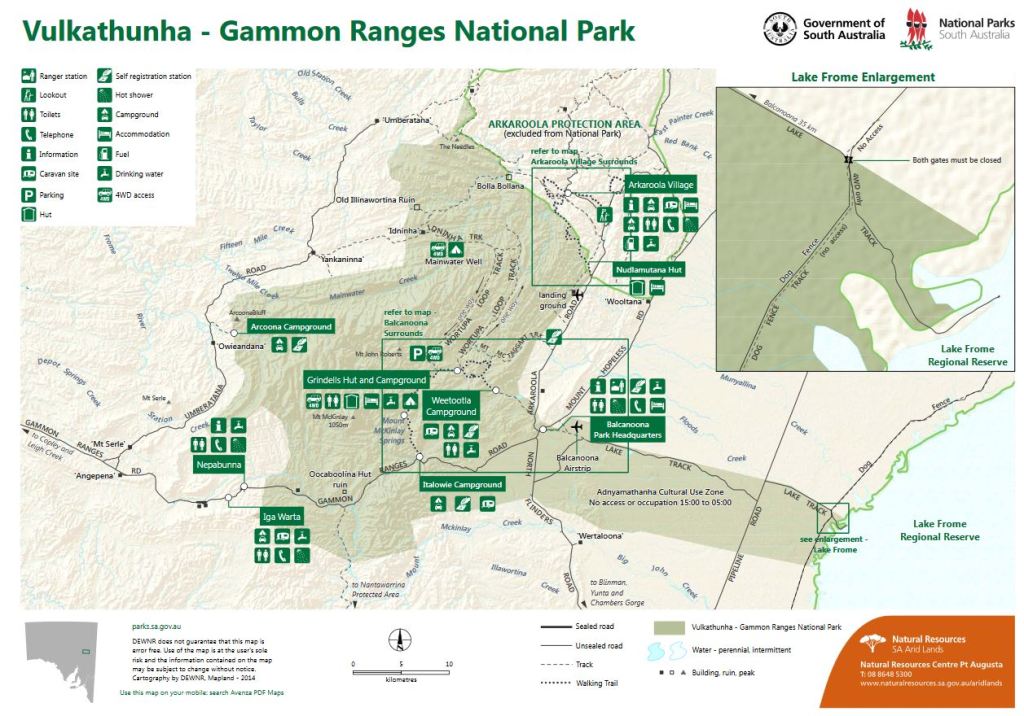
Then back out McTaggarts Track to the Arkaroola road. It was getting dark by the time we turned back onto the main road. Made a quick stop to gather some more firewood, heaving it up onto the roof rack, where the mesh base of this would stop it falling through – the best sort of roof rack to have!
Had our usual campfire before bed – weary bodies sitting about it, dissecting the day’s experiences.
I was trying to work out how many years it had been since John and I had done a walk this long and demanding? Maybe 2002 – five years? No wonder we were feeling it!
We packed a lot into today, including a couple of notable wildlife encounters: a yellow footed rock wallaby at Weetootla Springs (no hairy nose!) and a most unusual reptile with patches of bright orange and black patterning, on the very dry hillside near the Monarch Mine.
Knowing that there was still so much of interest to do here, we decided to extend our stay – due to end on Friday – by another four days.

